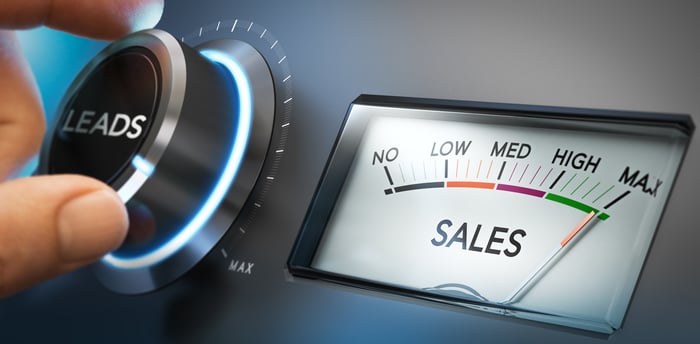It's no secret that digital advertising is locked in a virtual duopoly, with the majority of the spoils split between social media titan Facebook, Inc. (META -2.99%) and search giant Google, a division of Alphabet Inc. (GOOGL -0.86%) (GOOG -0.69%). While estimates vary, eMarketer forecasts that the two will control over 63% of digital ad spending for 2017, with Google grabbing over 42%, and Facebook garnering 21%.
The pair are also grabbing the majority of new spending in the sector, though exactly how much is unclear. Jason Kint of Digital Content Next estimates that Google and Facebook captured 89% of all digital ad growth in 2016. Brian Wieser of Pivotal Research estimates a number closer to 100%. David Doty of Interactive Advertising Bureau says those numbers are grossly exaggerated, with the top 10 players accounting for 69% of all digital spending growth in 2016.
Whatever the reality is, with the treasure trove of data controlled by these two companies, there have been very few that could compete -- that is, until now.

Can Amazon break the dominance of the Google-Facebook digital advertising duopoly? Image source: Getty Images.
The 800-pound gorilla in the room
Facebook and Google became the de facto leaders for digital ads, as advertisers increasingly require targeted marketing that only those with massive amounts of consumer data can provide. Facebook has reams of information regarding the interests of its 2 billion monthly active users, while Google uses the results of its search data to better match customers with advertising.
Online sales leader Amazon.com, Inc. (AMZN -1.86%) has been slowly gathering its own data and experimenting with a variety of advertising methods, both on and off its e-commerce website, prior to a big move into digital ads in the coming year. Amazon has the attention of a growing number of online shoppers and a vast amount of data on consumer buying habits. The company sees openings related to its e-commerce search and video products, as well as opportunities in programmatic advertising, which automates the process, using software to purchase digital ad space.
Amazon is estimated to be the fifth largest producer of digital advertising revenue, but currently controls only about 2% of the market. CEO Jeff Bezos has never seen a market he didn't want to disrupt, but Amazon has a distinct and growing advantage that will give the company an edge.
A recent survey found that 72% of shoppers use Amazon to find products, with 56% indicating they check Amazon first, according to data from performance marketing platform Kenshoo. This corroborates a survey from 2016, which found that when initiating an online shopping search, 56% of consumers in the U.S. would bypass a traditional search engine and start directly on Amazon's website, according to data compiled by BloomReach. At the same time, only 28% of shoppers reported starting their search on Google.
A large and growing opportunity
With the two largest players controlling much of new ad spending, it's no wonder Amazon wants a piece of the action.
The market for digital advertising worldwide is expected to crest $209 billion in 2017, growing 13% in 2018 to $237 billion. The U.S. represents the largest piece of that market, with spending exceeding $40 billion for the first six months of 2017, up 22.6% over the prior year period, according to a report sponsored by the Interactive Advertising Bureau.
Facebook and Google generate the majority of their revenue from advertising, amounting to 98% and 99%, respectively, in their most recent quarters. With that much at stake, Amazon has much to gain and Facebook and Google have much more to lose.





